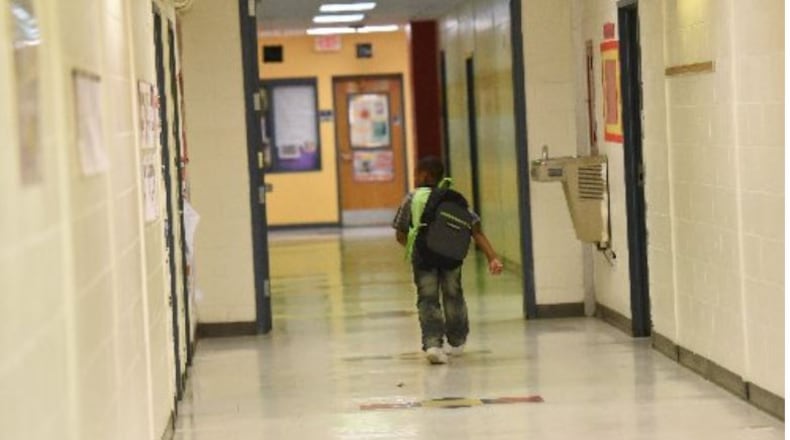University of Georgia education professor Peter Smagorinsky wrote a piece last year about a promising young teacher who chose to leave education. She has now returned to the classroom but in a different Georgia district.
In this column, Smagorinsky explains how her new district, with a focus on enhancing relationships rather than test scores, has revitalized her enthusiasm for teaching.
By Peter Smagorinsky
A year ago I wrote a Get Schooled essay about an outstanding early-career high school English teacher in Georgia who had become so frustrated with testing and scripted curricula that she decided to leave the profession. She had been a participant in a study I am doing of the career development of teachers, with interviews each semester since 2010, when she was still at UGA education major.
I’m happy to say she contacted me in the spring with the news that working in the private sector for a year had produced a yearning to be back in the classroom. Her job had been quite pleasant, and she had appreciated the way her day began at 9 and ended at 5, and did not involve late afternoons and evenings filling out forms, tutoring, grading papers, planning classes, recovering from exhaustion, and consuming her life until she started over again the next day.
It was a nice respite from what had become a grind in the classroom. But, ultimately, to her it was unchallenging, a bit boring, and unfulfilling. It was time to get back to the kids.
We talked for about 90 minutes recently about her first semester back at work. She did not return to her old position, her old school, or her old district, all of which she had found stultifying to her creativity and her relationships with her students. Her former district relies on test-driven curriculum and instruction, determining teacher effectiveness by test scores, no matter what kind of shape the kids are in. It was exactly what she wanted to avoid.
Her new district provides quite a contrast. At the school’s orientation before classes began in the fall, her superintendent spoke about the importance of human relationships, above all else. Not test scores. Not real estate values tied to test scores. No, he spoke compassionately about how everything follows from developing and fostering productive relationships within the district.
The emphasis on relationships was the central driving force in her return to teaching and in her happiness with this new position. The school is not perfect, of course. She has quibbles with some of the policies, for instance. But she loves the fact she has tons of latitude in what to teach, and how to teach it. And she loves her students and the idea that her main task is to ground her instruction in the relationships she develops with them.
Many of the kids come from low-income households, are immigrants, have personal challenges, and, in general, represent the demographic groups whose test scores often reflect poorly on a faculty and administration. But here was the superintendent telling the faculty to tune out the noise about test scores and focus on making the school feel positive to kids, teachers, counselors, principals, and I’m sure the cafeteria staff, grounds crew, and custodians as well.
What, then, helps teachers form these relationships? It’s useful to contrast her current district with the district she left a year ago in frustration. Her previous district administration had created a lot of barriers between students and teachers that produced alienation of each from the other.
The school’s scripted curriculum had reduced her flexibility in teaching on the basis of what she believed her students needed most. A curricular barrier of this sort assumes all students in the district (and other districts that purchase the same materials from edupreneurial corporations) have the same interests and needs. Anyone who has raised two children in the same household knows even the most closely bonded youth have different needs, however, and those needs are probably quite different from what a remote corporate textbook writer provides for them.
Making instruction responsive to the textbook’s materials and accompanying assessment products, rather than to what teachers understand about kids, alienates teachers from kids, and kids from both teachers and school. In a school like the one that now employs this teacher, with a predominant population of students of color whose heritages get little representation in these corporate products, the likelihood of estrangement from the institution of school is great.
The testing mandates further damage the possibility of constructing and cultivating strong relationships with students. These bonds in turn may lead to instructional insights that produce relevant, on-target instruction. Tests intervene in relationships by warping instruction toward the most reductive, least compelling ways of thinking: picking the best of four multiple choice items in response to a question the test-taker has little interest in answering.
The teacher I interviewed asserts this emphasis discourages teachers from teaching in any way that is not ultimately tested. This requirement means shutting down all open-ended, creative, constructive thinking and focusing on how to pick the best of four possible answers to irrelevant questions, posed only for diagnostic purposes. Kids see through this sham pretty quickly. It’s a shame policymakers are too dim to understand what any teenager could tell them in a second.
Relationships are not developed by limited-choice options. They follow from genuine interaction, mutual listening, generosity, care, responsiveness to emerging needs and hopes, and constructive thinking in relation to shared challenges. These processes are fluid, not restricted to four choices. By presenting teaching and learning as static, with fixed answers to immutable questions, the possibility of growth into active citizenship in a tumultuous social world is damaged.
I often hear administrators lack the will or fortitude to buck the assessment movement and its grounding in business-style accountability measures that reduce complex actions to single numbers. There’s at least one district in Georgia, however, where the superintendent has rejected the premises behind that assumption and has insisted good teaching begins with forming relationships with kids.
I wish there were a whole lot more school systems with leadership of this sort. I suspect most teachers would agree with me, and that kids would buy into education much more if such alienating barriers to the building of relationships were removed.
About the Author


